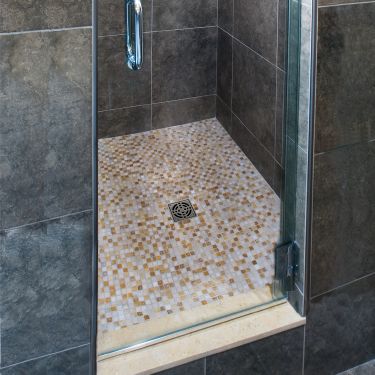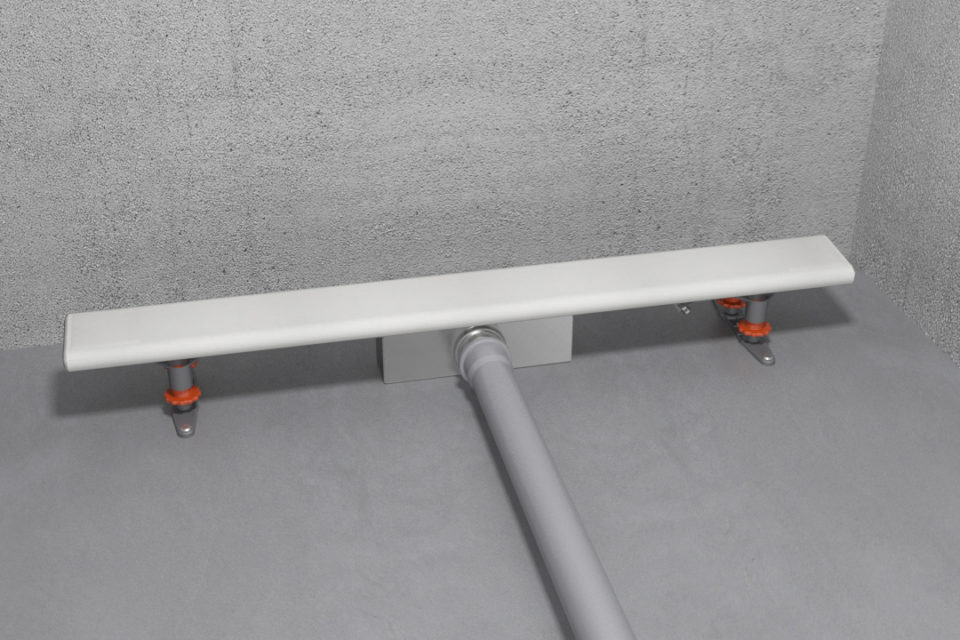Just about everyone seems to have their own individual piece of advice in relation to Simple Steps for Installing a Shower Base.

Upgrading a washroom is just one of the extra prominent residence enhancement projects. Taking care of the plumbing for draining your shower can be extremely basic unless you go overboard.
Managing Your Own Shower Drainpipe Installment Task
You can physically build a collection agency for your brand-new shower, however you truly require to think about it. Do you really want to get involved in the difficulties of getting the sloping correct, in addition to making certain every element of it is water resistant? As well as I imply every facet! It is a lot easier to merely buy a pre-cast enthusiast online or at your regional Lowes, House Depot or hardware store. Building one could sound like a terrific concept, however you will probably really feel differently after a number of hrs.
Regardless of just how you tackle getting a pan, you must make every effort to utilize one that has the drainpipe situated in the exact same area as the initial pan. Moving the drain pipes can be a task, especially if the builder used an one-of-a-kind framework framework. If you are determined to move the drain, you are going to have to reduce the pipe or lengthen it, which might imply destroying large pieces of the floor. Rephrase, you are going to be taking a look at a multiple weekend job.
Presuming we have our drain aligned, the real link is relatively basic. The drainage pipe ought to be dealing with vertical approximately the enthusiast. It will certainly commonly look like a "U", which indicates it functions as a cleanout to keep nasty smells from coming back up from the drain. To attach the drainpipe, you are going to create a water tight connection between a drainpipe cap on the top of the pan and also the drainage pipeline. Equipments differ, but you are typically going to do this by placing a combining piece on the top of the drainage pipe. This is then covered with gaskets and also literally screwed into the drain cap. The drainpipe cap must work as a locknut, to wit, it screws directly onto the coupling.
The tricky part of this process is getting your drainpipe cap to suit a leak-proof placement in the frying pan. This is completed by withdrawing the drainpipe cap once you are sure every little thing meshes. Then, you put plumbing technicians putty around the bottom of the cap and after that screw it back on. The putty needs to develop a tight seal in between the cap as well as the shower frying pan, which maintains water from dripping under it and also into the framing under the shower.
Undoubtedly, shower room showers come in a wide array of designs nowadays. If you buy an enthusiast, they usually featured plumbing instructions or the shop can note anything unusual you need to understand. It seems intricate, but is normally pretty straight forward. Have a good time!
Whether you are a tub or shower individual, lots of people search for shower just alternatives when getting a house. This basic fact means greater than a couple of property owners spend a weekend upgrading or setting up showers in their shower rooms. The good news is for you, it is a fairly simple procedure.
A collection agency or frying pan refers to the horizontal surface located at the bottom of the shower. The collection agency commonly consists of a non-slip surface a little banked in the direction of the facility or anywhere the drainpipe lies. Integrated with three to four inch walls around the side, the objective of your shower drain plumbing is to obtain the water to move to as well as away.
Tips for Installing a Shower Drain Assembly
Renovating a bathroom can be exciting as well as fulfilling if you’re tackling the job DIY-style. After you cross off the bigger decisions such as tile style, paint colors, and fixtures, you’ll need to finalize smaller details – such as the shower drain. In this article, we’re sharing some tips for selecting and installing the right drain assembly for your updated shower.
What is a shower drain assembly?
Shower bases or pans typically only come with a pre-drilled drain hole. Since the pan slopes toward the drain, you should consider the placement – left, center, or right – when designing your shower. You’ll need to purchase and install a shower drain assembly that connects the shower pan to the drain pipe underneath the shower. There are a few types of assemblies, which will be covered below.
Size of a shower drain
When it comes to installing drains, size matters. The recommended pipe size for a shower drain is 2 inches, whereas most tubs use 1.5-inch pipes. Why the difference?
Shower pans are shallower than tubs, so there’s a higher risk for overflow. So, the larger pipe allows for quicker draining. If you are replacing an old tub with a newer stand-up shower, you will need to make additional plumbing adjustments to accommodate the 2-inch pipe.
Types of shower drain assemblies
There are three common types of shower drain assemblies: compression shower drain, solvent-glue shower drain, and tile shower drain. The layout, design, and materials of your shower can determine which type of shower drain assembly will work best.
Compression shower drain
This type of assembly attaches to the drain pipe with compression washers and nuts. The drain fitting is typically installed into the base, and then the base is installed into the bathroom floor. This makes compression-style drains easier to install than other options, particularly if you don’t have easy access from the floor under the shower base. Drains are available in a wide range of materials such as PVC (polyvinyl chloride), ABS (Acrylonitrile Butadiene Styrene), and brass, and can be used for acrylic, fiberglass, and steel shower bases.
Solvent-glued shower drain
Made of either polyvinyl or ABS, this type of shower drain is sealed to the drain pipe with solvent glue and silicone. Since you’ll be working underneath the drain pan, we only recommend using this type of drain if you have access under the shower, such as from a basement or crawlspace. It’s also important that you match the type of plastic of the drain with the drainpipe. If you take these precautions, you can install a solvent-glued drain assembly with acrylic, fiberglass, and steel shower bases.
Tile shower drain –
Drain assemblies for custom tile showers feature a waterproof membrane liner placed between two flanges. The tile is installed on top of the liner, collecting any water that seeps through the porous grout. A metal strainer is installed in line with the tile over the drain.
https://www.epshawaii.com/blog/tips-for-installing-a-shower-drain-assembly/

I hope you enjoyed reading our section about Simple Steps for Installing a Shower Base. Thanks a lot for finding the time to browse our short article. Don't hesitate to take the opportunity to promote this blog if you enjoyed it. Thank you for your time. Visit again soon.

